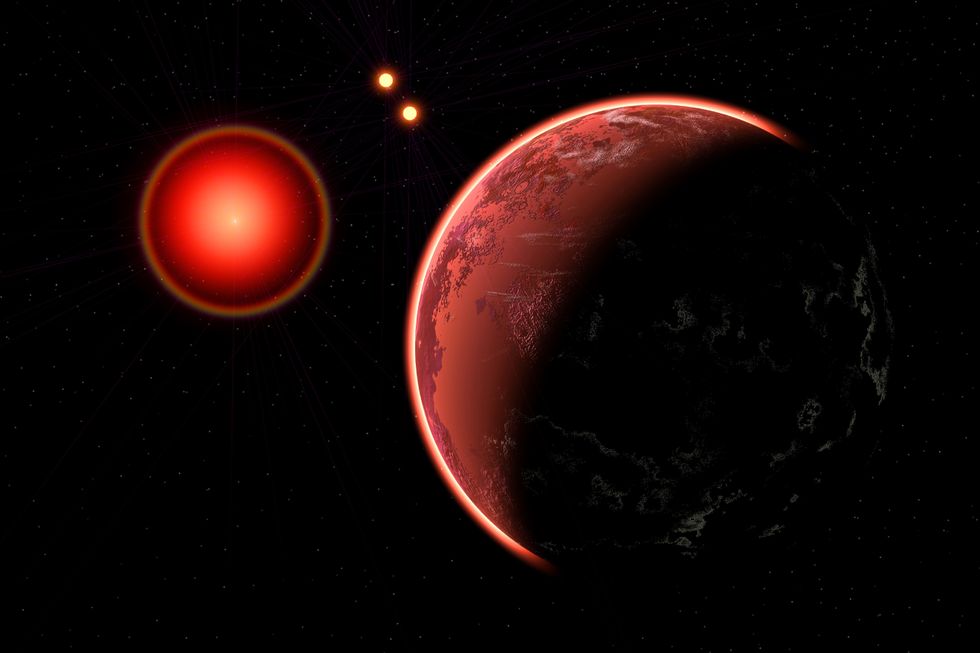Scientists discover new way to detect ‘alien life’ as they scan distant planets for oceans

It has previously been difficult for scientists to confirm the presence of water on exoplanets
Don't Miss
Most Read
Water on other planets could become easier to detect, according to a new study.
New research proposes a way to identify exoplanets, a planet that orbits a star outside the solar system, harboring oceans and potentially even hosting alien life.
It is currently incredibly difficult for scientists to detect water on exoplanets.
While it is sometimes possible detect water vapor in atmospheres, finding planets with actual oceans has so far stumped scientists.

Scientists are hopeful to find oceans on exoplanets
|Getty
However, new findings that were published in the journal Nature Astronomy suggest by comparing the carbon dioxide (CO2) levels of neighboring exoplanets, potential water worlds could be identified.
The key lies in the fact that Earth's oceans absorb a significant portion of atmospheric CO2.
Therefore, theoretically, an exoplanet with significantly lower CO2 levels then its neighbors could be hiding liquid oceans beneath its surface.
The new groundbreaking research was led by University of Birmingham professor of exoplanetology Amaury Triaud and assistant professor of planetary sciences at MIT Dr Julien de Wit.
LATEST DEVELOPMENTS

Proxima B Planet, Orbiting Proxima Centaur
|Getty
Professor Triaud said: "It is fairly easy to measure the amount of carbon dioxide in a planet’s atmosphere.
"This is because CO2 is a strong absorber in the infrared, the same property causing the current rise in global temperatures here on Earth.
"By comparing the amount of CO" in different planets’ atmospheres, we can use this new habitability signature to identify those planets with oceans, which make them more likely to be able to support life."
Dr de Wit added: "Life on Earth accounts for 20 per cent of the total amount of captured CO2, with the rest mainly being absorbed by the oceans.
"On another planet, this number could be much larger. One of the tell-tale signs of carbon consumption by biology, is the emission of oxygen.
"Oxygen can transform into ozone, and it turns out ozone has a detectable signature right next to CO2.
"So, observing both carbon dioxide and ozone at once can inform us about habitability, but also about the presence of life on that planet."
A key part of the new study is that those signatures are detectable with current telescopes.
Dr de Wit added: "Despite much early hopes, most of our colleagues had eventually come to the conclusion that major telescopes like the JWST would not be able to detect life on exoplanets.
"Our work brings new hope. By leveraging the signature of carbon dioxide, not only can we infer the presence of liquid water on a faraway planet, but it also provides a path to identify life itself."











